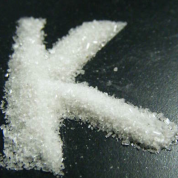Ketamine

Description
Ketamine is a dissociative anaesthetic which creates an apparent detachment of the mind from the body. Chemically related to phencyclidine (PCP, Angel dust) it is widely used as a veterinary and a human anaesthetic.
Medically it is regarded as a very safe anaesthetic as it does not depress respiration. Ketamine is also used for recreational purposes and has become increasingly popular over the last 10 years..
In its pharmaceutical form, ketamine is supplied as a clear liquid for injection. However, on the streets ketamine is usually sold as a fine white crystalline powder, although tablets and liquid may sometimes be found. Ketamine may sometimes be passed off as another drug.
For more information, including harm reduction, visit our 'safer injecing' section here.
At lower doses the effects include a sense of euphoria and may involve mild hallucinations. Physically there may be a sense of numbness and general lack of co-ordination leading to difficulty walking, standing and talking. Nausea or vomiting is not uncommon. Ketamine users also occasionally report “flashbacks” after use.
At higher doses a full hallucinogenic effect may be experienced - the “K Hole”. This is often experienced as a complete out of body sensation in which users may believe that they have entered another world or crossed over into another realm of consciousness. The phrase ‘near-death experience’ is sometimes used, of course few of us have had a genuine near death experience, so the reference criteria for this description is highly subjective.
A feeling of paralysis has been reported in which the user is fully conscious and can see but cannot move or speak. These feelings may have a spiritual or supernatural quality.
The physical effects at higher doses can include temporary blackouts and paralysis, which may occur along with loss of control over bowel and bladder movements.
